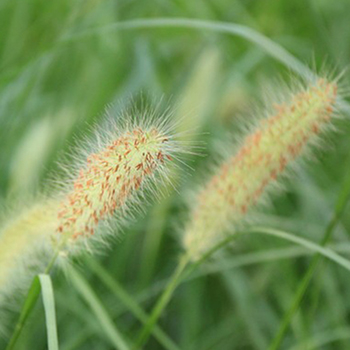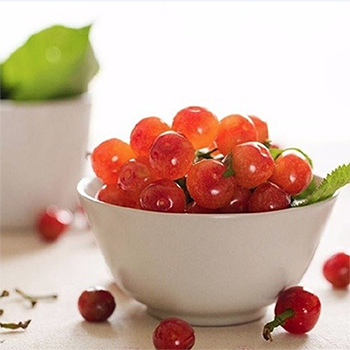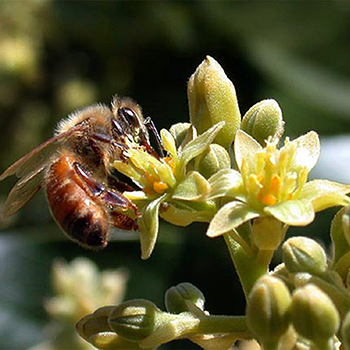目前購物車內沒有商品
The breast is fixed to the thorax by the Cooper's ligament and it is only supported and given shape by the cutaneous jacket. Whether it's childbearing, breast-feeding, weight fluctuation, age or simply gravity; a woman's breasts will eventually lose its elasticity and firmness and head south. It is for this reason that the ingredient Kigeline is so important.
Kigeline is a phyto-hormone derived from the fruit of the Kigelia Africana tree and acts to prevent the relaxing of skin tissue while increasing firmness and tension. Phyto-hormones are plant chemicals remarkably similar to human hormone secretions. They are rich in bioflavonoids and they contain effective antioxidants. Scientific investigations have confirmed that the flavanoids and phyto hormones contained in the flesh of the fruit are responsible for the toning effect because of their hormone-like qualities. Clinical results on the firming properties of kigeline have been achieved at 5% concentration; Dermaglow Up-lift Breast Firming Gel is the only breast product on the market with kigeline.
About Kigelia pinnata:
Kigelia pinnata (Bignoniaceae), colloquially called the Sausage Tree, or Worsboom, on account of its large fruits, has a variety of medicinal uses throughout Africa where it grows as an endemic species in many areas. Chemical examinations has resulted in the isolation of iridoids and naphtoquinoids as important secondary metabolites but flavonoids and lignans have also been isolated.
Investigation into the biological activity of Kigelia pinnata has focussed on its antibacterial activity and its cytotoxic effects against cancer cell lines. These are related to the traditional uses of bark and fruit extracts for treating diseases caused by micro-organisms and as a remedy for skin cancer.
The iridoids and naphtoquinones have been shown to display antibacterial activity and also the ability to inhibit the growth of yeast. Considerable in vitro cytotoxicity has been demonstrated by extracts of the fruits and barks and the iridoid-related compound norviburtinal and the naphtoquinone isopinnatal have been shown to be two of the compounds responsible.
Although little ethnopharmacological evidence exists, the naphtoquinones are active against several protozoal species associated with disease. The compounds also show cytotoxicity against mammalian cell lines.
Introduction
Kigelia pinnata is also commonly referred to in the scientific literature as Kigelia africana.
Kigelia is now generally considered to be a highly variable monospecific genus of the Bignoniaceae, although several species have been reported in the past. It is a reasonably large tree, attaining 20 m in height and grows in moist places, such as river banks, throughout the savannah areas of tropical Africa.
Ethnobotanical uses of Kigelia pinnata with particular reference to its medicinal uses
Kigelia pinnata is mentioned in all the reference books dealing with economic plants of the parts of Africa where it grows. There are some uses which are widespread, like a decoction which is used in many parts of Africa as a laxative and the powdered dried fruit helps extensively as a dressing for wounds, ulcers and sores. Of particular interest is the use of the fruit to treat cancer which is reported from Togo (Neuwinger 1996) and especially from Southern Africa where it has a consideralbe reputation for being effective against solar keratosis which may develop into skin cancer (Hutchings et al. 1996).
Chemical constituents of Kigelia pinnata:
It is important to know which secondary metabolites are found in plants because these may provide a basis for its traditional uses, particulary if they are the same as, or similar in structure to compounds from other species which display relevant activity. To some extent, the type of compounds likely to be present can be deduced from its taxonomic position and this can be seen to be the case with Kigelia pinnata which is a member of the Bignoniaceae, a family noted for the occurrence if iridoids and naphthoquinones in many constituent genera .
The iridoids (Figure 1) found in Kigelia correspond to the 9-carbon skeleton type, e.g. catalpol 1, found in other
members of the Bignoniaceae. The major iridoids found in the rootbark and stembark of Kigelia pinnata are the catalpol derivatives esterified with phenylpropanoic acid derivatives at C-6 and these were indentified as specioside 2, verminoside 3 and minecoside 4 (Houghton and Akunyili 1993).Norviburtinal 5, generally considered to be a breakdown product of the iridoids has also been isolated from the roots, stembark and fruits.
Three furanonaphthoquinones kigelinone 7, 2-acetylnaphto[2,3-b]furan-4, 9-quinone 8 and 2-(1-hydroxyethl) naphthol [2,3-b] furan-4, 9-quinone 9 have been isolated from Kigelia pinnata stem- and rootbark (Figure 2). Two pairs of monoterpenoid-naphthoquinone compounds (Figure 2) named pinnatal 10 and isopinnatal 11 and kigelinol 12 and isokigelinol 13, unique to Kigelia pinnata, have been isolated from the roots and fruit.
The flavonol quercetin 14 and four flavonones luteolin 15 its 6-OH analogue 16 and corresponding
7-O-glucosides 17, 18 were isolated from the leaves and fruits of Kigelia pinnata.
Three isocoumarins 6-methoxymellein 19, kigelin 20 and 6-demethylkigelin 21 were isolated from the roots of the plant. The lignan kigeliol 22 was isolated from the wood and was the only lignan reported until 1999 when the neolignan balanophonin 23 was isolated from the stembark.The common steroids ß-sitosterol 24 and stigmasterol 25 have been isolated by various workers from the bark and root of Kigelia pinnata, sitosterol 26 Kigelia pinnata fruit by Khan 1998 (Figure 4).

Figure 1: Iridoids from Kigelia Pinnata Figure 2 : Naphthoquinones from Kigelia Pinnata

|
Figure 3: Flavonoids & other shikimate- igure 3: Flavonoids & other shikimate- derived compounds from Kigelia Pinnata Fderived compounds from Kigelia Pinnata Flavonoids and other shikimate-derived compounds from Kigelia pinnata Biological studies on Kigelia pinnata :
Most of the studies on the biological activity of Kigelia pinnata extracts and constituents have been connected in some way to its traditional uses. In many parts of Africa the extracts of Kigelia pinnata bark has been used as a treatment for STDs. An unpublished ethnobotanical survey amongst traditional healers of the Ibos in south eastern Nigeria conducted by Dr. Akunyili from University of Nigeria revealed that they use an aqueous or dilute alcohol extract of Kigelia pinnata roots as a treatment for STDs. Extracts of the roots equivalent to those obtained using the traditional methods were found to contain the iridoids specioside 2 and minecoside 4 as major constituents. The extracts, as well as two of the isolated iridoids, were tested and also their 1/10 and 1/100 dilutions, against four representative species of bacteria viz. Staphylococcus aureus, Bacillus subtilis, Escherrichia coli and Pseudomonas aeruginosa, and the yeast Candida albicans in the absence and presence of the enzyme emulsin. This enzyme converts catalpol-type iridoids to their more antimicrobially active non-sugar containing aglycones. The growth of the organism in culture broth was assessed by measuring the turbidity of the solution. The results showed that the aqueous extract had strong activity, even in the absence of emulsion, against all the bacteria tested but especially against the yeast C. albicans.
Futher studies using a wider range of micro-organisms and compounds showed that the naphthoquinoides from the stembark also had a moderate antimicrobial effect. |
Although the nature of the extract and the part of the plant from which it was derived were at first unclear, further investigations revealed that a 50% ethanolic extract of the fresh fruits was most commonly used.
Other findings included the information that the white population had learned of this use of the plant from the indigenous ethnic groups in Zimbabwe and surrounding countries, a fact supported by literature reports (Neuwinger 1996, Hutchings et al. 1996). The precise definition of skin cancer was unclear and there is a range of diseases with different severity which could be classified as such. These range from erodent ulcers, which are common in fair-skinned persons exposed to bright sunlight, and are not melignant per se but often develope into malignant growth, to melanoma which is often refractory to treatment, particulary it has metastasised.
As well as the ethnobotanical evidence, there were other indicators that Kigelia extracts might possess anticancer activity. A large number of related species of the Bignoniaceae are used for this purpose in traditional medicine (Hartwell 1968) and also some naphthaquinones from this family, e.g .Lapachol 6, have attracted interest as potential anticancer drugs.
Studies were consequently initiated testing Kigelia pinnata extracts in vitro for cytotoxicity against cultured melanoma cells using the SRB assay for cell viability. The compound with the greatest activity, isolated from the most active fraction after separation on a silica gel column, was not a naphthoquinone but the iridoid-like compound norviburtinal 5. The steroid ß-sitosterol 24 was also found in the most active fraction but had negligible activity. Comparison of the activity of norviburtinal 5 with the amount present in the dose of extract having the same activity showed that it did not contribute to a large part of the effect e.g. norviburtinal 5 had an IC50 of 3.25 µg mL¯¹
against G 361 cells (144 hours exposure) but it was calculated that its concentration in the total extract (C50 2.1µgmL¯¹) was only 0.154 µg mL¯¹, thus indicating that other cytotoxic compounds are present. This was also shown by the fact that other fractions which did not contain norviburtinal 5, which were not investigated further, also displayed appreciable activity.
Although norviburtinal 5 had a reasonable good level of activity against the melanoma cell lines tested, it was also cytotoxic against other cancer cell lines (Table 1), thus reducing its suitability as a lead compund for cancer chemotherapy. Although it does not appear to be used in traditional medicine for treating cancer, the rootbark extract also showed some activity and the naphthaquinone isopinnatal 11 was shown to play a major contributuin to this (Jackson et al. 2000).
It is of interest to note that 2 mg extracts of Kigelia pinnata fruits have also shown antitumour effects when given intraperitoneally to mice with fore-stomach tumours induced by benzo(a)pyrene - see attached report of Professor H.Kolodziej Freie Universität Berlin. The extract alone showed little toxicity when it was given to the mice and so these studies give further evidence of the safety and efficacy against cancer of the ethanolic extract of the fruits.
A paper by Khan (1998) ascribed some in vitro cytotoxic activity found in an extract of the fruits to the steroid ?-sitosterol 26 but this has not been confirmed by other studies.
It is interesting to note that the related S-sitsterol 24 was found in the active fraction of Kigelia pinnata fruit and bark but showed no activity.
However, the occurence of novel naphthoquinones prompted the investigation of antiprotozoal activity of extracts and isolated naphthoquinoids since naphthoquinones exhibit antiprotozoal activity.
Table 1: In vitro cytotoxicity of norviburtinal 5 against cultured cell lines :
|
Cell line |
|
IC50 value µM*† |
|
G 361 |
melanoma |
22 |
|
|
melanoma |
50 |
|
C 32 |
|
50 |
|
ACHN |
renal cancer |
48 |
|
|
|
22 |
Masured using the SRB assay. Figure given is the mean of three separate determinations.
† IC50 value for vinblastine sulphate (positive control) against these cell lines is 0.95 – 1.65 µM
This activity is due to the increase of oxygen consumption and stimulation of hxdrogen peroxide production in the protozoal cell. Protozoa do not have the same biochemical mechanism as mammalian cells for dealing with excess peroxide and consequent oxygen free radicals and so this process is used as a target in the search for novel antiprotozoal compounds. Bioassay guided fractionation of extracts of Kigelia pinnata rootbark and stembark was carried out using in vitro cultures of Trypanosoma cruzi (the organism associated with Chaga’s disease) and T. brucei rhodesiense and T. brucei (associated with sleeping sickness). Similar studies were carried out with Leishmania major (associated with leishmaniasis) and Plasmodium falciparum (the causative agent of malaria) for which the chloroquine-resistant K 1 strain was used. No great dose-related acitivity for extracts of compounds could be found against T. cruzi or the amastigote forms of Leishmania major or Trypanosoma but some acitivity was observed against the other protozoa.
In all cases the extract of the plant material proved to be the most active and the greatest activity was shown by 2-(1-hydroxyethyl)naphtho(2,3-b) furan-4,9-quinone 9, with isopinnatal 11 also showing some activity. The in vitro cytotoxicity of the compounds was also tested using cultered mammalian KB cells and the values obtained suggested that the compounds had a general cytotoxic effect which tended to preclude any clinical usefulness.
It should be noted, however, that the selectivity against Trypanosoma was more promising (Table 3) and indicated that the active compounds might prove useful lead compounds for further studies against these organisms.
The traditional uses of Kigelia pinnata bark and fruits as a treatment for oedema, ulcers and other sores might indicate antibacterial, wound-healing and anti-inflammatory effects.
In addition to the antibacterial activity discussed above, there is a report on the anti-inflammatory effect on rats of the ethanolic extract of the Kigelia pinnata fruits - see attached report of Professor H. Kolodziej, Freie Universität Berlin, Germany The test used was the size of oedema induced by injection of a standard doese of albumen into a rat paw
The extract at 100 mg/kg¯¹ gave a significant 54% reduction in the circumference of the paw compared with the albumen alone which was comparable with a dose of 10 mg/kg¯¹ of the positive control indomethacin.
Table 2: In vitro antiprotozoal activity (IC50 inµM) of compounds isolated from Kigelia pinnata
|
Compound |
Leishmania major |
T. brucei |
T. brucei |
Plasmodium falciparum |
|
2-(1-Hydroxyethyl)-naphtho |
1.77 |
0.12 |
0.045 |
5.23 |
|
Isopinnatal 11 |
1.74 |
0.37 |
0.73 |
25.10 |
|
Kigelinol 12 |
24.40 |
4.21 |
21.3 |
> 100 |
|
Isokigelinol 13 |
12.46 |
1.36 |
11.1 |
> 100 |
|
Positive control (Pentamidine) |
0.578 |
0.007 |
0.016 |
0.228 (Chloroquine phosphate) |
Table 3: Selectivity ratio of cytotoxicity of compounds isolated from Kigelia pinnata stembark between protozoa and mammalian cell lines
|
Compound |
IC50 KB/ED50 |
IC50 Vero/ED50 |
IC50 KB/ED50 |
|
2-(1-Hydroxyethyl)- naphthol[2,3-b] furan-4,-
quinone 9 |
2.2 |
1.86 |
33.6 |
|
Isopinnatal 11 |
8.5 |
9.42 |
41.8 |
|
Kigelinol 12 |
6.1 |
5.00 |
35.1 |
|
Isokigelinol 13 |
13.4 |
9.23 |
122.6 |
|
Positive control (Pentamidine) |
7.4 |
284 |
710 |
|
IC50 Vero/ED50 |
IC50 KB/ED50 |
IC50 Vero/ED50T 。brucei |
IC50 KB/ED50 |
|
85.5 |
28.2 |
71.8 |
0.70 |
|
20.0 |
46.2 |
22.2 |
0.59 |
|
7.0 |
28.9 |
5.7 |
N D |
|
15.1 |
84.7 |
10.4 |
N D |
|
284 |
435 |
174 |
861 |
Conclusions :
Kigelia pinnata is an interesting example of a plant, used in traditional medicine for many years, but which is now attracting interest and use far beyond its original geographical range.
Experiments into the effect of Kigelia extracts and some of the pure compounds contained therein, on micro-organisms and cancer cells have shown that the traditional use of this plant is given considerable justification. In addition, there exists evidence for its anti-inflammatory reputation.




